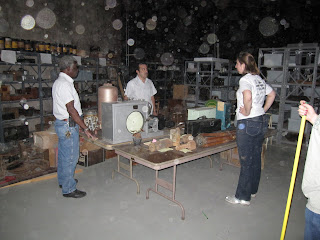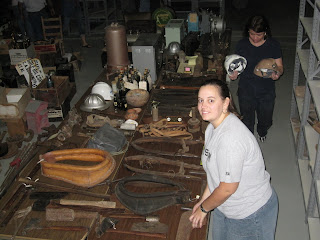While doing some "Spring Cleaning," I came across a file that contained a Loan Agreement, completed by my predecessor in April 2006, loaning several pieces of oil field equipment to the NRHC. I contacted both the NRHC and my predecessor who confirmed that the materials were to be deaccessioned and then given to the NRHC; however, the process was never completed.
What is deaccession, you ask? According to the Museum Registration "bible" (The New Museum Registration Methods, edited by Rebecca Buck and Jean Allman Gilmore), deaccession is the formal change in recorded status of the object. Where accessioning is the process by which objects come into the Museum's collection, deaccessioning is the opposite of that. Once objects are deaccessioned, then they can go through a disposal process.
One should not see deaccessioning as a bad thing or even as controversial. Yes, museums are to preserve and build collections for prosperity. However, museums are living things -- missions, policies and people change which changes the institutions themselves. Objects once thought critical to a museum's mission may no longer be so after time. Or objects may be duplicated multiple times in a museum's collection and other institutions could use those items for their own collections.
According to the Museum's Collection Management Policy, items can be deaccessioned for a number of reasons, such as:
The object is no longer within the Museum’s scope or mission.
The object does not support the collecting policy of the Museum.
The object does not have clear, legal title.
The object does not support the research, education or exhibition purposes of the Museum.
The object unnecessarily duplicates other objects in the Museum’s collections.
The object requires storage or conservation resources that cannot be provided by the Museum.
The object was accessioned in error, such as tools, exhibit cases, exhibit material or cleaning supplies.
The object is a danger and hazard to museum staff, volunteers, and patrons.
The items approved for deaccessioning yesterday were all duplicates in the Museum's Permanent Collection; they are much better utilized at the NRHC.
Questions? Leave a comment!















